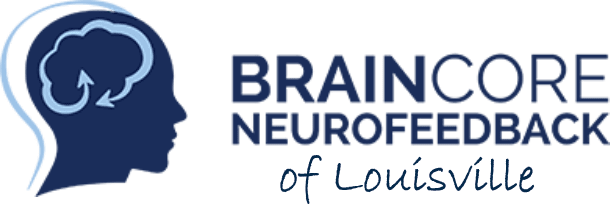Blog
Blog

22 Mar, 2022
What Is Autism Spectrum Disorder? Autism Spectrum Disorder (ASD) is a neurodevelopmental disorder that occurs more frequently in boys than girls, and symptoms can vary enormously from child to child. The spectrum includes previously separated diagnoses of Autism, Asperger’s, Pervasive Developmental Disorder not otherwise specified, and childhood integration disorder. However, all of these labels have been consolidated under the category of Autism Spectrum Disorder. Cases of autism range from mild to severe. Those with milder symptoms can be very high functioning and they may even be difficult to identify. However, in severe cases, the quality of life of both the individual on the spectrum and their family members or caretakers can be negatively impacted due to their need for constant supervision and support. There is no known cause of ASD or cure for it. Instead, our goal is to help those with an Autism Spectrum Disorder to reduce their symptoms. Symptoms Of Autism Spectrum Disorder There are several symptoms that accompany autism that can limit a person’s quality of life. However, with neurofeedback treatment, patients can learn to reduce these symptoms and live fuller and more rewarding lives. Below are some of the most common symptoms exhibited by people on the spectrum. • Impaired Social Interaction • Impaired Communication (verbal and nonverbal) • Restricted Interests • Repetitive Behaviors Treating Autism with Neurofeedback Therapy So is neurofeedback therapy good for autism? Absolutely. And although drug-based treatments may help manage behaviors, they don’t address the underlying cause of the problems and they are unlikely to provide lasting improvements. Furthermore, the medications used for autism can result in a number of unwanted side effects. At BrainCore Therapy, we help patients with Autism Spectrum Disorder by strengthening the functional connections in the brain and correcting brainwave abnormalities. To do this, we use advanced computer and medical technology to create custom-tailored treatment protocols for each and every patient. Here’s how. Brain Mapping Brain mapping is the first step in treating autism spectrum disorder with neurofeedback. During brain mapping, a 12 sensor cap is placed on the scalp to record activity throughout the brain. This process is entirely painless and completely non-invasive. The findings from the brain map is then compared to “normal” brain activity, and from here, we can identify the areas of the brain that are functioning abnormally which are linked to symptoms, and subsequently need improvement. Neurofeedback BrainCore Therapy of Louisville uses neurofeedback to treat a variety of disorders, including autism, stress, depression, anxiety, insomnia, PTSD, ADHD, and more. After brain mapping has concluded, we will develop a custom treatment protocol based on the person’s individual needs. For example, if the brain map shows that the patient has too many slow brainwaves (delta and theta) in frontal regions of the brain, we can create a treatment protocol that will help normalize these brainwaves towards more desired frequencies in order to achieve symptom reduction. Once they learn the techniques to speed up their brainwaves, they can continue to use them even after their treatment ends and without neurofeedback therapy to guide them. Learning these techniques is like riding a bike: once the patient has learned the skills, they’re not likely to forget them. This makes neurofeedback therapy good for autism since it gives patients the ability to influence their brainwaves towards more desirable and functional patterns. Benefits Of Neurofeedback Therapy For Autism Neurofeedback therapy is a safe, non-invasive, drug-free treatment for Autism Spectrum Disorder that can reduce symptoms and help patients achieve long-term relief. And while there is no “cure” for Autism Spectrum Disorder, neurofeedback treatment can also have a positive impact on co-occurring symptoms for a whole host of disorders and can even improve concentration, focus, impulsivity, hyperactivity, mood, anxiety, emotional outbursts, Improving these symptoms leads to a better quality of life, more confidence, and more control for the patient. Is Neurofeedback Therapy Safe For Autism? Neurofeedback therapy is incredibly safe for autism treatment. There are no invasive procedures involved in the therapy. Likewise, it is not a drug-based treatment, so there is minimal risk of adverse side effects. Neurofeedback therapy solely aims to help the patient gain control over their own brain function to experience symptom reduction and self-regulation. Studies have shown neurofeedback to effectively and safely reduce symptoms of autism. Contact BrainCore Therapy of Louisville Today! 502-203-7766

14 Feb, 2022
New research has found that brain training based on the principle of ‘neurofeedback’ enables people with attention deficit disorder (ADHD) to improve their ability to concentrate. Scientists from the University of Geneva (UNIGE) and the University Hospitals of Geneva (HUG), Switzerland, have explored a new technique called ‘neurofeedback’, which enables ADHD patients to train their attention. The training has a positive effect on patients’ concentration abilities, and attention improvement was closely linked to an enhanced response from the P3 wave of brain activity which is known to reflect integration of information in the brain. Higher P3 amplitudes indicate greater attention towards detected targets. The findings have been published in the journal Clinical Neurophysiology. A non-pharmacological approach ADHD involves difficulties with attention, concentration, and impulsiveness, and is characterised by a deficit in dopamine, a neurotransmitter involved in executive functions. Marie-Pierre Deiber, a researcher in the Department of Psychiatry at UNIGE Faculty of Medicine and at the HUG Division of Psychiatric Specialties, said: “These disorders persist for the most part into adulthood and lead to problems in relational and socio-professional functioning, making it easier for people with this disorder to turn to alcohol or drugs.” Today, ADHD is treated with medications that increase the concentration of dopamine, are used for ADHD to improve a patient’s attention, which is often combined with psychotherapy as the disorder is often accompanied by depression, anxiety, or even bipolar disorders. “However, pharmaceutical treatments can be accompanied by significant side effects, such as nervousness, sleep disturbance, but also an increased risk of developing other psychiatric disorders or cardiovascular diseases,” explains Roland Hasler, a researcher in the HUG Division of Psychiatric Specialties. “This is why we wanted to investigate a completely non-pharmacological and non-invasive treatment based on the principle of ‘neurofeedback.” Neurofeedback Neurofeedback is a type of neurocognitive intervention based on the training of “real-time” brain signals. The team used an electroencephalogram (EEG) with 64 sensors to capture the electrical activity of cortical neurons and focus their analysis on the spontaneous Alpha rhythm (with frequency around 10 Hertz), coupling its amplitude fluctuation to a video game that the patients can control with the power of their attention. “The aim of neurofeedback is to make the patients aware of the moments when they are no longer attentive. With practice, brain networks then “learn” to reduce attentional lapses through neuroplasticity,” said Tomas Ros, researcher in the Department of Basic Neurosciences at UNIGE Faculty of Medicine and at the Centre for Biomedical Imaging (CIBM). To measure the effects of neurofeedback training, the team administered an attention test to 25 adults with ADHD, and 22 neurotypical adults, which demonstrated that, at baseline, ADHD patients made more mistakes and had a more variable reaction time than the control participants, in line with a signature of impaired attention. After 30 minutes of neurofeedback training, the participants took the attention test again. Deiber said: “The first finding was that stimulus detection and response variability were improved, indicating attentional enhancement. But what interested us most was the impact of the neurofeedback training on the P3 component, which has previously been shown to be reduced in ADHD, and directly linked to the neurocognitive processing of the stimulus.” “The amplitude of the P3 increased significantly after neurofeedback training, and was directly associated with a reduction in the number of errors made by the patients,” added Ros. This study demonstrated that a single 30-minute session of neurofeedback can induce short-term plasticity in the brain and encourages attentional improvements in ADHD patients. It also supports the existence of an electro-physiological marker of attentional processing in ADHD. Nader Perroud, Professor in the Department of Psychiatry at UNIGE Faculty of Medicine and at the HUG Division of Psychiatric Specialties, highlighted: “Thus, the P3 could be a cerebral signature that would allow us to better understand the neurocognitive mechanisms of ADHD.” The scientists plan to carry out a neurofeedback treatment based on multiple training sessions, in order to observe whether the brain’s plasticity is strengthened over time.
Browse Our Website
Contact Information
Phone: (502) 203-7766
Email: info@braincorelouisville.com
Address: 13125 Eastpoint Park Blvd
Suite 105 Louisville, KY 40223
Business Hours
Mon-Fri 8:00am - 12:30pm
3:30pm - 6:00pm
Sat 8:00am - 12:00pm
Our Location
Contact Information
Phone: (502) 203-7766
Email: info@braincorelouisville.com
Address:
13125 Eastpoint Park Blvd Suite 105 Louisville, KY 40223
Business Hours
Mon-Fri 8:00am - 12:30pm
3:30pm - 6:00pm
Sat 8:00am - 12:00pm
Our Location
Find UsContent, including images, displayed on this website is protected by copyright laws. Downloading, republication, retransmission or reproduction of content on this website is strictly prohibited. Terms of Use
| Privacy Policy




